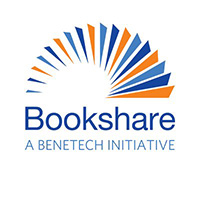What are the school’s responsibilities regarding assistive technology?
Page 5: Implementing AT
 Once the IEP team determines that AT is warranted, the next step is to develop a plan to help guide AT implementation and ensure the delivery of AT services. This plan is typically created by an AT implementation team—a sub-group of the IEP team most directly involved in the implementation of the AT, such as the students’ teacher(s). In general, an AT implementation plan includes information about the:
Once the IEP team determines that AT is warranted, the next step is to develop a plan to help guide AT implementation and ensure the delivery of AT services. This plan is typically created by an AT implementation team—a sub-group of the IEP team most directly involved in the implementation of the AT, such as the students’ teacher(s). In general, an AT implementation plan includes information about the:
- Contact person who will coordinate efforts
- Members of the AT implementation team and their roles
- AT devices and services that will be used
- Use of AT across home, school, and community environments
- Training on the AT for student, teachers, and parents
- Monitoring and evaluation of the AT
Educators can check with their state or district to find out whether there are specific procedures or documents to use to create an implementation plan. If not, the National Assistive Technology Research Institute (NATRI) has created a form that AT implementation teams can use to develop and document their AT plans. Click to view or print the NATRI Assistive Technology Implementation Plan.
After the AT implementation team completes the plan, it is time to put that plan into action. As the student begins to use the device in the predetermined environments, keep in mind the following:
Did You Know?
Not all new equipment has to be purchased before a student is able to try it out. A variety of options are available for obtaining equipment on a temporary basis (e.g., state and regional technology lending libraries, vendors, other schools, and disability-related organizations).
- The student, parents, and relevant school personnel should receive training on the proper use of the device(s) in question. Some AT will be simple to implement in the classroom, whereas other types may be more difficult or might require more time to learn how to use effectively.
- Before attempting more difficult content, the student should first practice with a new device using academic content that is familiar to her. This will prevent the student from having to struggle with academic content while also learning to use a new device.
- Students using AT may require more time to complete some instructional tasks than is typical for other students.
- Teachers should familiarize the entire class with the AT and explain why certain students need to use it.
And remember: Teachers are not responsible for knowing everything about AT! If teachers have questions after training, they can consult the implementation plan to find out who to contact regarding equipment maintenance or software problems. When necessary, teachers can confer with other knowledgeable individuals, like information technology specialists, other educators, or even members of the student’s family. Teachers can also search websites and blogs for answers to their questions or to learn more about how others have successfully implemented AT in the classroom.
Listen as Daniel Cochrane and Megan Mussano discuss considerations for the effective implementation of AT.

Daniel Cochrane, MA, MS, ATP
Assistive Technology Specialist
Clinical Instructor, University of Illinois at Chicago
(time: 1:47)

Megan Mussano, MS CCC-SLP/L, ATP
Assistive Technology Coordinator, Illinois K-12 School District
Instructor, University of Wisconsin-Milwaukee and Aurora University
(time: 0:47)
Daniel Cochrane, MA, MS, ATP
Implementation is everything. There’s a saying attributed to Thomas Edison, the one that goes “Genius is one percent inspiration and 99 percent perspiration. So for me the translation in AT is it’s one percent consideration and 99 percent implementation. And actually, in saying that, I’m interpreting implementation to mean everything that comes after we’ve determined that AT is potentially effective. I’m lumping together consideration, assessment kind of at the beginning. And, of course, that one percent is really, really important, too. But implementation is the real work.
If the student doesn’t have the operational skills that they need to use their AT, I would say they’re not ready for classroom implementation. And if they’ve never functionally used AT to do the activity at the level expected by classroom activities–for example, using speech recognition to write a full blown essay, not just a couple words–then I don’t think they’re ready for classroom implementation either. So they need to have the operational skills and the functional skills. And if they don’t, we need to arrange for individualized training.
There’s a tipping point, though, where this type of one-on-one training or small-group training can’t adequately simulate a classroom expectation or the unexpected barriers of using AT in the classroom environment. So at this point we need to embed the use of AT in the classroom and provide the support that is needed to encourage the growth of strategic skills and social skills. By strategic skills, we mean when should I use this tool and when should I use something else? And by social skills, we mean how do I handle using this tool in front of my peers?
Megan Mussano, MS CCC-SLP/L, ATP
Training is essential to success. You have to train the student, train the teachers or the paraprofessionals, whoever’s working with the student. But also often we try to train the parents, especially if the assistive tech that we’re talking about is a communication device. They are an integral part of the IEP team. We want them understanding, knowing, and supporting the assistive technology at home just as much as we do at school. When I train parents, I say, “Rule number one is model, model, model.” I say it three times, because it’s that important. Once you train the student and the teachers or anyone else who is supporting the assistive technology, that is the first step to implementing it correctly in the classroom. The more people know how to use it, the better it’s implemented.
For Your Information
To learn more about AT and accessible resources, visit the sites below.
Assistive Technology Industry Association (ATIA): ATIA represents “manufacturers, sellers and providers of assistive technology (AT)—products, equipment and systems that enhance learning, working and daily living for persons with disabilities.” The organization’s website offers resources, research, and other information on the effective implementation of assistive technology under a wide variety of circumstances.
Closing the Gap: Looking for the latest news, information, and resources about assistive technology? Closing the Gap just might be what you need. Visit here also for Webinars and professional development opportunities.
Innovations in Special Education Technology: A Division of the Council for Exceptional Children, Innovations in Special Education Technology is “focused on providing educators (current & future), professionals, and family members innovative technology-based solutions for today’s needs.” The institute’s online home offers resources on research-to-practice, research spotlights, information on public policy and advocacy, and much more.
National Center on Accessible Educational Materials: This site provides resources for those interested in learning more about AEM and implementing AEM and NIMAS, including educators, parents, and students.
WebAIM: An authoritative resource for information on Web accessibility and the importance of accessible Web design for people with disabilities, WebAIM offers tools for validating the html code used in developing a website.
Instructional Considerations
Of course, merely having access to AT does not guarantee that a student will be successful. AT can enhance a student’s independence in the classroom but should by no means be considered a substitute for effective instruction. That said, to help get the most value out of a student’s use of AT, the teacher can:
- Understand how AT helps support the student’s IEP goals and objectives
- Participate in AT training to learn about the student’s AT
- Know the student’s strengths and weaknesses to better support AT implementation
- Communicate regularly with other teachers and family members about what is and what is not working
- Attend meetings (e.g., IEP meeting, AT implementation team meeting) to share information and consider the student’s AT needs
- Note whether AT is isolating the student or her peers
Listen as Daniel Cochrane and Megan Mussano discuss ways to prevent AT from isolating a student from his peers.

Daniel Cochrane, MA, MS, ATP
Assistive Technology Specialist
Clinical Instructor, University of Illinois at Chicago
(time: 1:49)

Megan Mussano, MS CCC-SLP/L, ATP
Assistive Technology Coordinator, Illinois K-12 School District
Instructor, University of Wisconsin-Milwaukee and Aurora University
(time: 2:03)
Daniel Cochrane, MA, MS, ATP
If the AT’s isolating the student from their peers then something’s wrong with the classroom environment. Now, just saying that doesn’t mean that it’s an easy fix. The classroom environment includes social and cultural and institutional factors, not just the physical arrangement of the room or how noisy it is or the lights or something. And a huge factor in that classroom is the cultural stigma that’s attached to disability and the way that AT functions to sort of exacerbate the stigma.
You know, alert, alert. Here’s a kid who’s different. I don’t think the AT causes the stigma. I think it just makes it worse. So we have to address this, meaning teachers need to plan for this eventuality and figure out ways to minimize it. Of course, universal design promises to be an answer here, but I don’t think it always is. Sometimes there’s no way around the fact that a particular impairment requires a very specific tool that the peers don’t need to use. I’m thinking of students with complex impairments who are using a wheelchair and an AAC device. I think it’s our responsibility then as educators, as parents, together to work against the potential for stigma by bringing kids into the conversation about AT. Sort of letting them in on the secret of what this thing is and what it does and why it’s cool that it really helps their classmate do something that they couldn’t otherwise do.
This is going to always be challenging, and it’s because it’s a problem that has to be addressed at a much broader cultural level. We’re just looking at the classroom level of this issue, but it’s within the context of our society as a whole.
Megan Mussano, MS CCC-SLP/L, ATP
Isolating the student from his or her peers is actually something that I attempt to preemptively avoid. When we talk about the student, it’s not just their present levels but also their feelings, emotions, and the environment. If they’re in an environment where they are receiving peer pressure, that’s something you discuss at that point in time. So when you’re identifying the tools that match the student’s needs, you take that into consideration. So, for example, many of our high-incidence students who struggle with reading and writing, we can implement two programs with word prediction, with text-to-speech and speech to text. Both of those tools are just a small extension that is added to their Chromebook. So a lot of the tools already have taken that into consideration where they try to make it look a little more universally designed for everyone so that the student doesn’t stand out.
At the same time, there are some communication devices the size of a cell phone. So when the student actually has the ability to isolate their finger and use the small buttons, I often give a student a smaller communication device so that they don’t stand out from their peers, so that they look socially appropriate. I would say, addressing whether AT is isolating the student is preemptively done but then again, at every single IEP, all the team members sit down at the IEP and discuss is this assistive tech working? Is it not? If the assistive tech isn’t working then maybe it’s time to trial something else. The assistive technology process is fluid. So if you try something, data shows it’s working, you implement it and then it starts to fail, you have to come back as an IEP team and say, “Well, either we didn’t train people appropriately, or this wasn’t the right assistive technology to support the student’s needs.” And you have to sit down and see if there’s a better technology out there to support the student. It really has to be a continual and fluid process.
Revisiting the Challenge: Brooke’s AT Implementation Plan
 During Brooke’s IEP meeting, an AT implementation team was identified. Mr. Edwards, the special education teacher, was named the contact person. In that role, Mr. Edwards consults with a district AT specialist to learn more about which AT devices and services are most likely to best meet Brooke’s needs.
During Brooke’s IEP meeting, an AT implementation team was identified. Mr. Edwards, the special education teacher, was named the contact person. In that role, Mr. Edwards consults with a district AT specialist to learn more about which AT devices and services are most likely to best meet Brooke’s needs.
- Devices — The AT specialist recommended the following:
- Bookshare provides digital versions of required readings. A Bookshare membership will enable Brooke to access her science and social studies textbooks.
- Task-management software will help Brooke manage her time and assignments effectively.
Bookshare
 Supported by the U.S. Department of Education and the Office of Special Education Programs (OSEP), Bookshare provides a vast online library of free accessible reading materials—books, magazines, newspapers, and more—for people with print disabilities like low vision, blindness, and dyslexia.
Supported by the U.S. Department of Education and the Office of Special Education Programs (OSEP), Bookshare provides a vast online library of free accessible reading materials—books, magazines, newspapers, and more—for people with print disabilities like low vision, blindness, and dyslexia.To learn more about Bookshare, visit the IRIS Module:
Task-management software
Any of a wide variety of more-or-less complex software packages or apps designed to facilitate the efficient coordination and completion of projects.
- Services — The AT specialist:
- Helps Mr. Edwards register Brooke for a membership with Bookshare through the school district.
- Identifies an app that is compatible with Brooke’s tablet and that has been used successfully by several other students she has worked with. She also helps download the task-management app to Brooke’s tablet.
- Helps Brooke personalize the task-management app to meet her specific needs.
- Provides training sessions for Brooke, her teachers, and her parents for Bookshare and the task-management program.